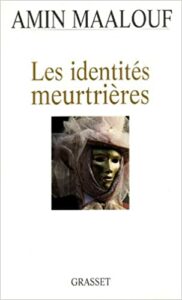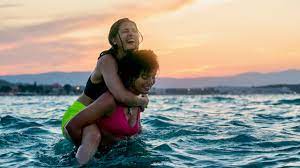Share
“What I would like to change in this world is that no one beats their kids… and can live happy. I want to live with my mother, not in an organization. I want people who love each other to meet up and be together. I want kids and parents to live together happily. I don’t want there to be discrimination between anyone, boys and girls, younger and older.” (p.1)
It was the answer of a 12 years old refugee Syrian girl when she was asked by the authors about what she would like to change in this world. Her answer reflects on the main topics the book talks about, but also reveals the consciousness of young refugees of their situation, their hopes, and where they want to be.
About the authors:
Liliana Riga is Senior Lecturer at the University of Edinburgh. She is a political and historical sociologist whose work explores immigration, refugees and civil society, racialised exclusions and political subjectivities.
Mary Holmes is Professor of Emotions and Society at the University of Edinburgh. Her research examines emotional reflexivity. She is one of the founding editors of the journal Emotions and Society.
Arek Dakessian is a research fellow at Queen Margaret University. His research interests include cultural production, material culture, historical sociology and political alterity. Arek is also a founding member of LIVED, an Edinburgh-based charity.
Johannes Langer is a PhD student at the University of Edinburgh. His research explores questions of racism, immigration and the rise of rightist nationalism with a focus on regional difference and historical social change.
David Anderson was Research Assistant on the Belonging in Beirut project and is a PhD student at the University of Edinburgh. His PhD work addresses displacement, marginalisation and social space in the urban environment in Soacha, Colombia.
The book offers an inside view of what is like to be a young refugee in Lebanon. The authors have put forward the agency of the young refugees they followed during their two years of fieldwork. They allowed total freedom for those young refugees to share what they wanted to share. As was mentioned in the book, sociology should be the “listener art”. The way sociologist way of paying attention should reflect on empathy and sensitivity and that was the main approach of the Book.
The book is divided into five major chapters. The first chapter named: “Navigating Beirut, singing in the dark” tackles issues related to families and friendships, humanitarian caregiving, racism, discrimination, and everyday decencies and civilities while navigating life in Beirut. As the authors followed 51 Iraqi and Syrian young refugees’ journeys in places where they interact such as their homes, schools, humanitarian spaces, and refugee camps, they found out that navigation and moving through different spaces is the way these young refugees cope with the unsettling that comes with their displacement status.
In the second chapter named: “I don’t have friends, I have cousins”, the book focuses on the issue of integration and creating relationships with other kids from the host country. It was explained by the authors that difficulties in building connections in that new environment resulted from displacement on the emotional level as well, which is why there’s a need for time for adjustment and adaptation.
In the third chapter named: A quiet politics in humanitarian spaces, you will able to capture the essence of the work done by organizations that were working closely with young refugees to ensure their safety and protection. It showed the complexity of dealing with kids having a lot of traumas, and being subject to bullying and rejection. For instance, when ALM one of the refugees there was sharing his story about being bullied at school and the authors kept asking questions for more details, the conversation was stopped by one of the social workers there. The intention was to protect the kid from any harm as he was getting frustrated about the subject. In that sense, it really showed that those humanitarian spaces took those young refugees’ care and protection seriously and put their safety first.
In the fourth chapter named: “Becoming young political subjects”, the book reflected on how Iraqi and Syrian young refugees experience various types of discrimination and exclusion. One of the powerful stories shared in this matter was one of the Syrian refugee girls who worked at a saloon and she said “I’m 17 years old. I’ll be 18 in a month … I very much dislike discriminating against or being discriminated against … Once I went to work at a salon. It’s like they were holding me accountable for being Syrian. I used to make 150,000 LL, and the other girl used to make 250,000 LL. She’d always leave early and I’d always still be there when she left … “Why does she get paid more than me?” He said, “because she’s Lebanese … you know that you can’t speak Syrian at this salon if you want to keep working here.” (p. 87). This passage sums up the racialization applied to those refugees in Lebanon. Throughout the chapter, the authors bring you into the multiple spaces where these refugees experience racism and discrimination and how they make sense of the fears they have in their daily life.
In the fifth chapter named: “A right to opacity?”, the authors tried to give a deeper understanding of the political subjecthood of the young Syrians and Iraqis, and more specifically those of refugeedom. They shared their hopes in seeing the political resistance and generosity of young refugees being incorporated into those political subjectivities. In this matter, the researchers realized that they may be responsible in a way for creating a political space for those young refuges unintentionally when they proposed they proposed an art activity that consist of building a large-scale public mural in which they could have a small space to share their thoughts about Beirut.
From an academic perspective, it can be tricky in some passages of the book to distinguish the researcher from the person. Because of the ethnographic nature of study, the authors spend a lot of time with those young refugees and built close relationship with them, which made it difficult for the researchers to distance themselves from the cause. However, as you go through the book, you will sense the high level of benevolence and care the authors had for the subjects of the research and not the research itself. They gave total agency to those young refugees who were a part of their investigation. From the methods used in this research to the language and constant ethical preoccupation gives justice to the cause and to the displaced people who want to share their journey as refugees. In conclusion, I would like to share this passage from the book that says: “Are photos given or taken? When we listen to people, do they give us their stories or do we steal them?” (p.113)



Average Rating